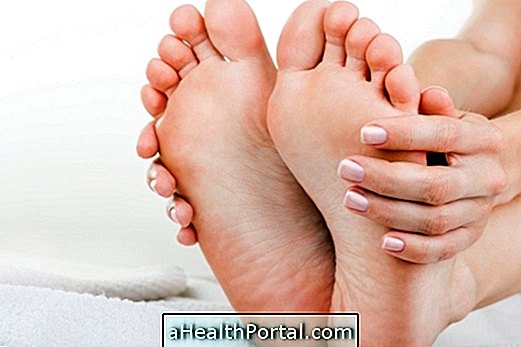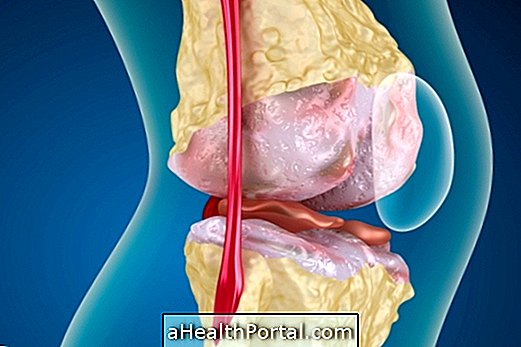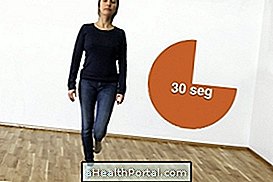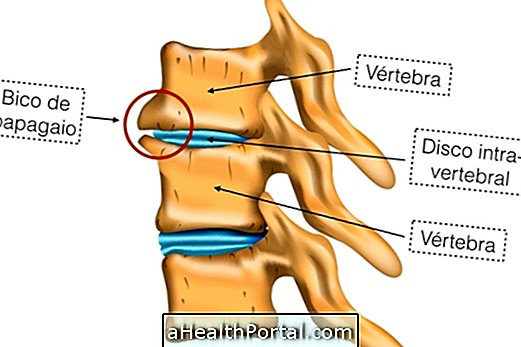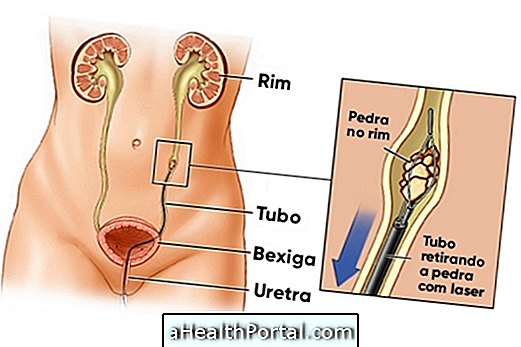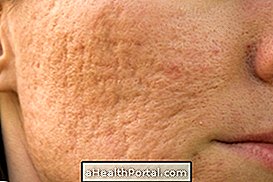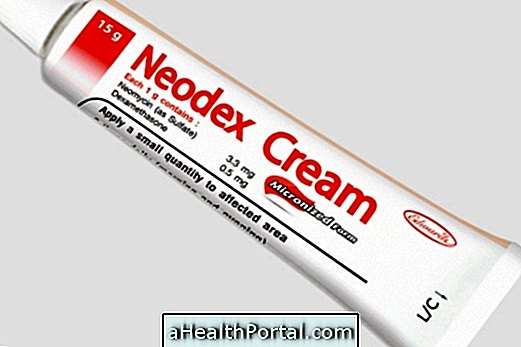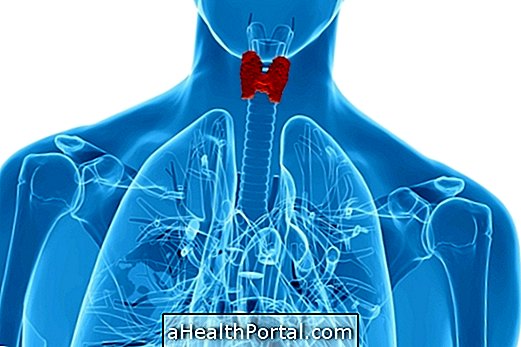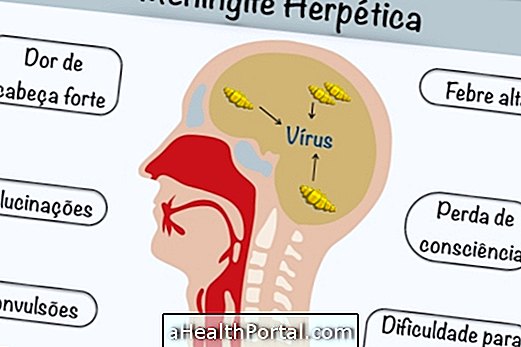The varus knee is a condition where the knees stay away even when the person can lean one ankle on the other. This usually happens because the tibia is not properly aligned with the femur, giving a different shape to the leg line. It is also known as varo geno or "cowboy legs".
In this way, the varus knee is exactly the opposite of the valgus knee, where the legs are turned inward, and the knees are always in contact, even when the person tries to move the legs apart. See more about valgus knee and how it is corrected.
Treatment for the varus knee, which is more common in men, varies according to the cause, so it is very important to consult an orthopedist to assess the degree of the change, the problem that is at its origin, and thus decide which is the best treatment option.
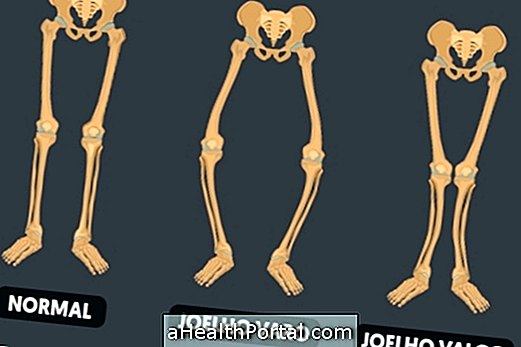
Exams to identify the varus knee
In consultation with the specialist one can observe the formation of the varus knee, but to know its severity, it is common for the orthopaedist to request examinations like:
- X-ray of the legs, standing;
- X-ray of the front and side knees;
Less common are computerized tomography (CT), nuclear magnetic resonance (NMR) examinations.
Blood tests may be requested if there is suspicion of any disease involved.
What treatment options are available
Treatment to correct knees apart may be indicated when:
- If the person has Blount's disease: surgery is indicated as of grade III of the disease;
- If the person has pain in the legs or knees;
- If it is difficult to walk or practice running;
- If the patella is not well aligned in the center of the knee;
- If there is instability in the knee due to flaccid ligaments;
- If there is concern about physical appearance.
Since there are several causes for the development of the varus knee, the treatment can vary from one person to another. So, the most important thing is always to consult an orthopedist to not only confirm the diagnosis but also identify the cause of the problem and start the most appropriate treatment. Some of the most commonly used treatment options include:
- Supplementation of calcium and vitamin D : is used mainly in cases of lack of these nutrients in the body to strengthen the bones, as in cases of rickets;
- Muscle strengthening exercises : should be done with a physical therapist to make the leg muscles stronger and help in the alignment of the legs;
- Surgery : it is used in the most advanced cases, when the other techniques do not cause any alteration in the alignment of the legs
Surgery usually helps to adjust the shape of the bones to reduce pressure on the joint and allow re-alignment of the tibia with the femur. Since it is a very invasive technique, the recovery can be quite time consuming, it may take up to 8 months before it can be resumed daily.
Examples of exercises for varus knee
Exercises to help correct the varus knee should always be guided by a physical therapist after physical assessment because there is an increase in the strength of the muscles of the inner thigh, the femur is abducted and the tibia excessively rounded out. Thus, in most cases it is necessary to strengthen the muscles of the lateral part of the thigh, the back of the leg and the gluteus. Therefore, some of the exercises used may be:
1. Exercise to strengthen the side of the thigh
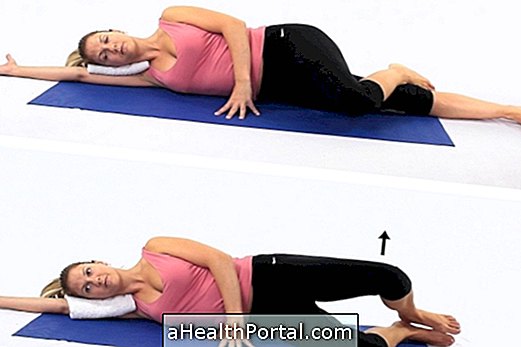
A great exercise to make the lateral thigh muscles stronger and also the middle gluteus is to lie on the side and position the foot behind the knee of the opposite leg. The movement that should be done, is similar to opening a shell, and so should open and close the knees as shown in the picture.
2. Exercise to strengthen the gluteus

In the case of a varus knee it is also very important to strengthen the gluteus maximus and for this, a good exercise consists of getting 4 supports on the floor and then raising one of the legs toward the ceiling. This movement should be done slowly and repeated between 8 and 10 times, for 3 sets, with each leg.
3. Exercise to strengthen the back of the leg
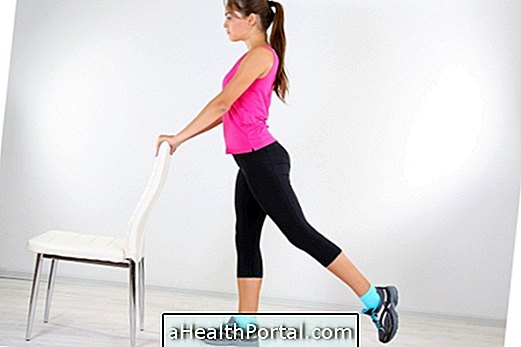
One of the best ways to strengthen the muscles of the back of the leg is by using a shin guard to do this exercise, however, it is also possible to hold some type of weight in the ankle region, such as a bean pack, for example.
To do the exercise, one should stand and support one hand on the wall, or in a chair, and then, with the knees together, bend the leg back without separating the knees. This exercise should be done 8 to 10 times with each leg, for 3 sets.
What are the possible causes of the varus knee
The varus knee is very common in young children and can be seen soon after birth, being a physiological condition that usually corrects itself until 2 years of age without the need for treatment. Sometimes it can be maintained until the age of 8, with no need for specific treatment, although it has to be evaluated by the pediatrician, orthopedist and physiotherapist at this stage.
Other possible causes are:
- Birth change that persists over the years;
- Strong knee bangs;
- Infections in bones;
- Bone tumor;
- Diseases such as rickets, achondroplasia, Paget or Blount.
Usually the varus knee is identified up to 10 years of age, but it can also happen in adults due to joint diseases such as osteoarthritis, for example. Often, when the varus knee arises up to 2 years, it is possible that the correction of the deformity naturally fouls the development of the bones, without the need for any specific treatment.
What Other Symptoms May Occur
In addition to the visible deformity of the legs, some people may experience pain when walking, especially in the inner knee. These symptoms are more rare in children, since the joints adapt to the alteration, causing no pain.
